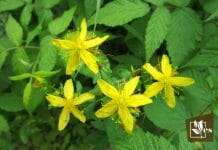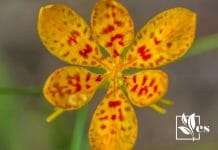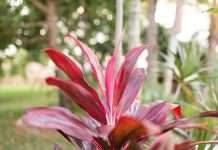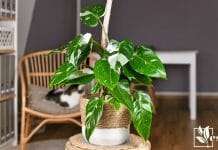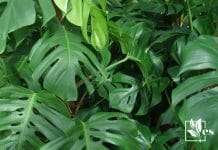Plants that look like cilantro are ones that have similar features to it, with their stems and spiky-edged leaves. For those who enjoy the look of cilantro of the Coriandrum genus but not necessarily the smell, as they do not share these properties.
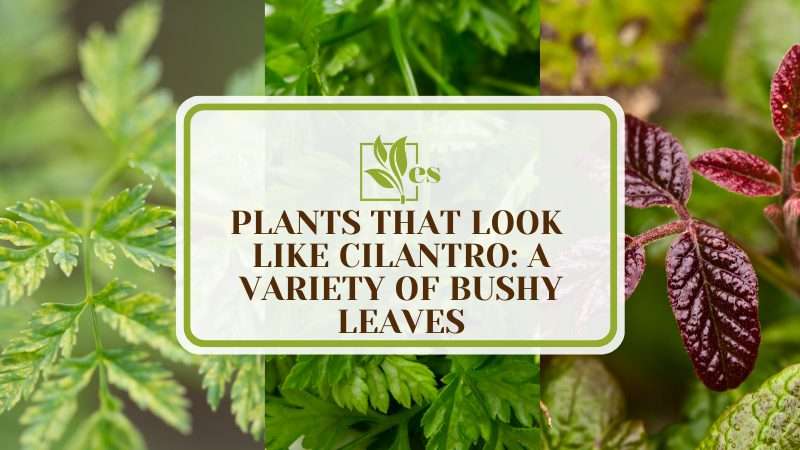
If this sounds anything like you, then you’re in luck. We have prepared the ultimate list of plants that look just like cilantro. Keep reading to find out the easier and more unique varieties of plants to use in your kitchen.
JUMP TO TOPIC
List of Plants That Look Similar to Cilantro
1. Parsley
Parsley is a biennial plant of European origins typically grown as an annual culinary herb. The triangular, dark green leaves of parsley, which grow in clusters of lacy foliage about a foot high, can be used as a garnish or as an aromatic ingredient in dishes. This is its key use in different areas around the world, as it has a unique taste.
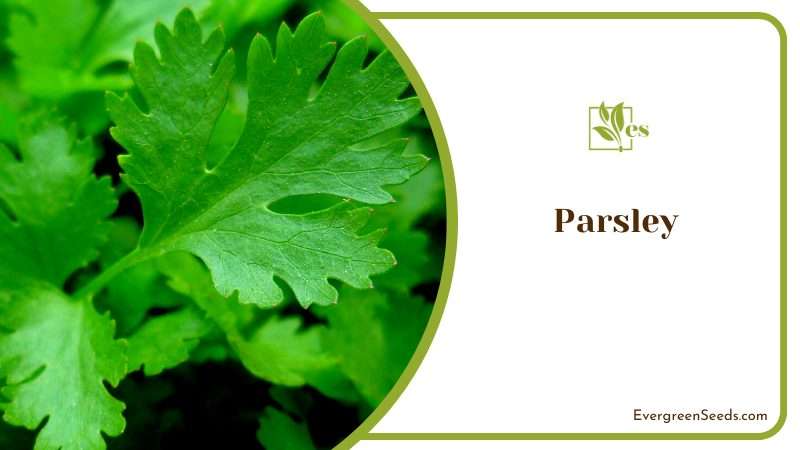
– Characteristics
Most parsley cultivars grow very slowly, reaching maturity between 70 and 90 days after planting, and are best planted in the spring, as this is the time when they will grow in harmony. This is one of its most common characteristics, and it would start to release its aroma and show its beautiful green leaflets.
On the other hand, there also exist different parsley kinds that have a variety of flavors, so before you choose what to plant in your garden, think about how you would like to use the herb in a proper way. This means that you must be significant when considering the key characteristics that it has for its flavor supplying use.
For instance, some people find curly parsley to be a little bitter, but flat-leaf parsley, which is also called Italian parsley, to be a bit more appealing to their taste, of course it would differ from the wild growing ones to the cultivated ones.
– Growth Requirements
The ideal soil for parsley plants is evenly damp but not saturated. You should give your plant at least one to two inches of water each week to thrive which is either from rainfall or manual watering methods. The herb produces its most attractive foliage in loamy soil with plenty of organic matter.
On another note, you must not overwater them or water them at inappropriate times, and in order to prevent waterlogging of the plant, the soil must also be well-draining, or else the roots will be damaged, and it will result in a weak herb, and the ideal soil pH ranges from neutral to slightly acidic.
As for the sun requirements that it has, for optimum growth, this herb needs full sun, defined as at least six hours of direct sunshine on most days. In warmer regions, it does prefer some afternoon shade.
When you decide to plant them, remember that the seeds of this plant can either be started indoors or directly sown outdoors. When you are planning to plant them remember that you can do it either inside eight to ten weeks before the previous predicted frost date in your location or when you go with placing them outside, it is roughly three to four weeks before that date.
The planting area needs good soil drainage and a lot of sunlight. Another choice is container growing. To prevent crowding out the parsley seedlings, try to maintain the area free of weeds and other robust growth.
2. Corriander
While coriander and cilantro may look like the same plant, they are vastly different in taste which is why it is used differently in foods, because one is used for the leaves, while other is used for the stem, and this is how they would be different.
Any herb garden would benefit from the inclusion of coriandrum sativum. In addition to being a reasonably simple plant to produce, it offers two cooking uses for the price of one.
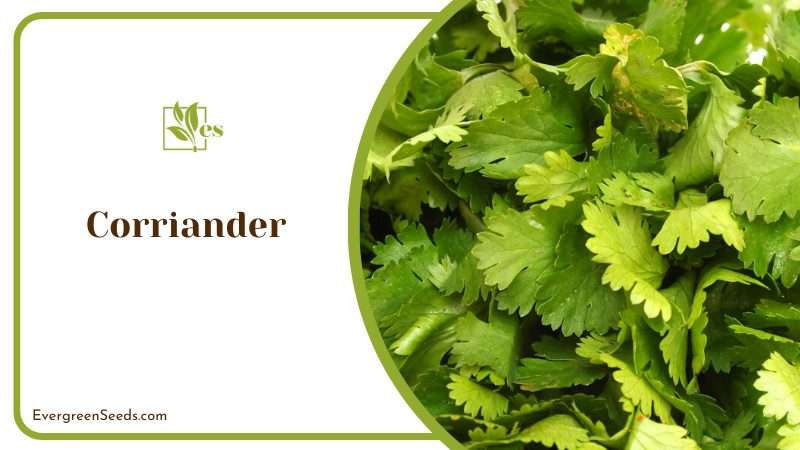
– Characteristics
The plant’s flat, lacy leaves, which are best consumed fresh, and its thin, green stems are what give cilantro its name. Coriander, another common name for it, refers to the seeds, which are frequently used as a spice in cooking, particularly in Middle Eastern, Indian, and Asian cuisines.
Although it can be grown in the fall, early spring is the ideal time to plant cilantro. It develops swiftly, frequently producing its first crop of leaves in less than 30 days. After planting, the seeds will be ready to be harvested in around three months.
– Growth Requirements
For planting coriander, the best seasons are early spring and late fall. If you aren’t planning to plant in the spring, wait until the summer’s heat has subsided before starting your fall planting. In short, it is safe to say, before the fall frost arrives, you may only be able to harvest the leaves in some climates, not the seeds.
On most days, the coriander plant thrives with six hours or less of direct sunlight. But when planning your garden, pick a location where there won’t be too much high-noon sunlight, as strong rays can burn coriander leaves.
In addition, when you are cultivating it, the optimum soil for this herb is one that is loose, loamy, quick-draining, and somewhat acidic. As seeds germination and seedling development take place, keep the soil evenly moist but not saturated.
3. Poison Oak
Poison oak is a low-growing deciduous shrub, not an oak. Urushiol, a natural oil found in its stems and leaves, can induce a severe skin rash at any time of year, even in the winter when the shrub is dormant.
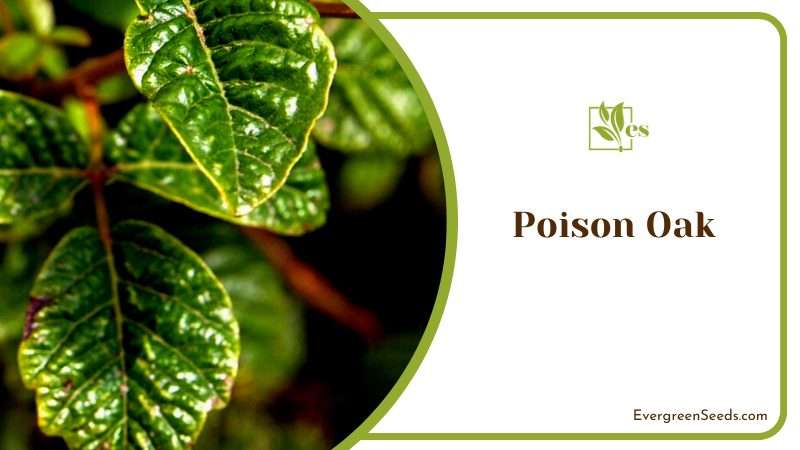
– Characteristics
The plant, which is native to North America, is valuable to wildlife because robins and other birds prefer the berries, songbirds eat the berries during their fall migration, and other birds eat the insects that reside on poison oak.
But if poison oak suddenly appears in your yard, you should put your own safety before the needs of any wildlife, because it can grow in a fast pace. It should be carefully removed after proper identification. Being familiar with poison oak will also enable you to spot it in the wild and prevent exposure.
– Cautiousness
If poison oak suddenly appears in your yard, birds that consume the berries are most likely to blame. Poison oak grows slowly to the naked eye, yet it establishes a massive underground root structure. It is essential to recognize and get rid of it as soon as it manifests because it is so harmful to people.
Poison oak can be removed in two different ways: by hand or using herbicides. Herbicide sprays must be timed in accordance with the plant’s stage of growth, whereas hand removal can be done at any time of the year.
4. Wild Carrot Leaves
When it comes to plants that look like cilantro and parsley, wild carrot leaves are the ones that you should look for, as they are a fast-growing annual leafy plant. Wild carrot, also known as Queen Anne’s Lace or Daucus carota when it comes to the Latin version, and it is a biennial plant that is sometimes mistaken for poison hemlock. This weed can irritate skin when touched, especially if the sap is touched and then the person is exposed to the sun. Most often, well-drained to dry soils are used to grow wild carrots.
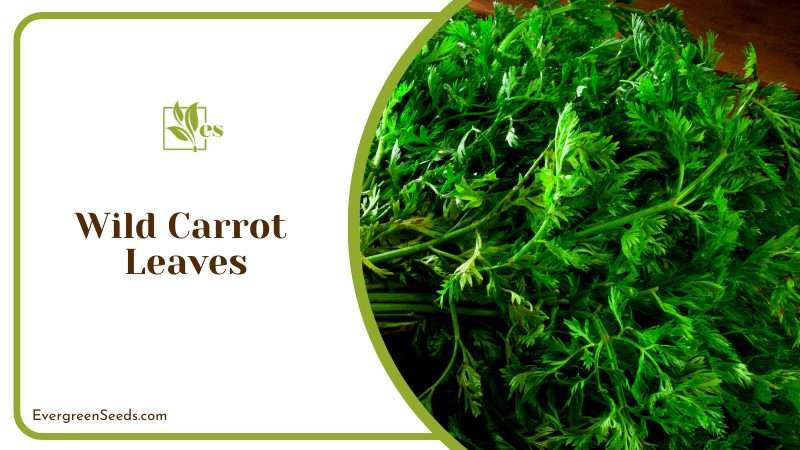
– Characteristics
Although most people are unaffected by wild carrot, some sensitive persons may experience a rash if they are exposed to the sap since it contains some of the same chemicals as gigantic hogweed and wild parsnip. Additionally, mildly harmful to cattle, the plant can contaminate milk if enough is consumed by the cows that produce the milk.
Moreover, the wild carrot is considered a Class C noxious weed, except for situations where it is farmed for commercial purposes, and for specific needs. Also keep in mind that poison hemlock, cilantro plant, and wild carrot have very similar appearances, which is why they are mistaken for different aspects and harvested.
Your planting location should have well-draining soil and be bright to partly sunny. Another choice is container growing. Avoid planting in areas where other Brassicaceae members have been recent, as pests and illnesses that harm the family may still be present in the soil.
The feathery, yellowish-green leaves of the wild carrot include numerous tiny, complex, toothed leaflets. The leaves are placed alternately.
– Features
Flowering stems begin to grow in the second year. The stems are hollow, ridged, hairy, and yellowish-green in color. Additionally, they contain branches, and the base of the stalk may be reddish in colour. The mature plant can grow up to one to four feet tall, and it has coarse hairs all over it.
In the second year, flowers appear in July and persist until September. Numerous white flowers in umbels, or clusters, of five petals make up the inflorescence. Every blossom is white, perhaps with a hint of pink, and there is frequently a solitary dark purple flower in the center of the umbel. The wild carrot plant is distinguished by its purple center blossom. Clusters of blooms that have reached maturity close up and resemble tiny bird nests.
5. Chervil
French cuisine regularly uses the delicate culinary herb chervil, it has a moderate flavor and is a member of the parsley family. This plant is used quite often for culinary uses, and it is commonly known as the French parsley.
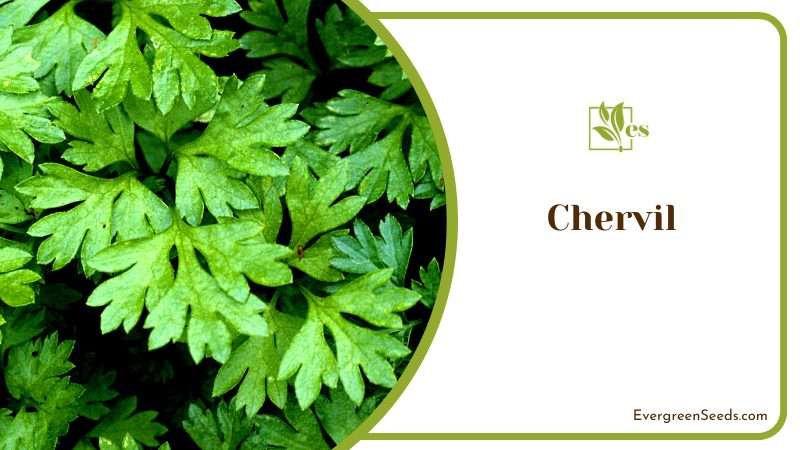
Chervil tastes like a lovely blend of parsley and tarragon. Chervil has a moderate flavor with undertones of licorice or anise, but not a pronounced anise or licorice flavor. Fresh parsley, tarragon, or a combination of the two would work well in place of chervil if a recipe called for it. Often this herb can be used for different purposes and can alternatively be used in place of chervil, however, they have different flavors.
– Characteristics
This is the herb that you can grow easily in your own garden. You can plant it in a garden that receives both light and shade or grow it in a tiny container on your windowsill. It reaches a height of around two feet. It can be produced from spring or late-fall planted seeds.
Every three to four weeks throughout the growing season, sow seeds to maintain a crop. The leaves are soft and fully opened when they are ready to be harvested. The leaves can be dried by air and stored.
Chervil, like its parsley relative, will bolt as soon as summer gets warm, and it blooms, produces unpleasant flavors, and sets seed when it bolts. Be forewarned that chervil in the garden appears to attract slugs.
– Growth Requirement
Chervil is a sensitive plant that dislikes being disturbed after it begins to grow. On another note remember that this herb should be planted in the garden exactly where it will thrive. As it must be planted as soon as there is no longer any danger of frost. Although the herb can withstand some cold, it thrives in the cool months immediately following a frost.
One of the rare herbs that thrives in shade and damp soil is chervil. It would quickly bolt in the heat, much like cilantro will, so keep it out of direct sunlight, on the other hand, it is important that you would plant it in a rich soil, that is organic and full of nutrients.
6. Poison Hemlock Leaves
Native to Europe and North Africa, poison hemlock has also been brought to Asia, North America, and Australia. Coniine, a poisonous alkaloid found in all sections of the plant, is deadly to both livestock and people; even minute levels can result in respiratory collapse and death.
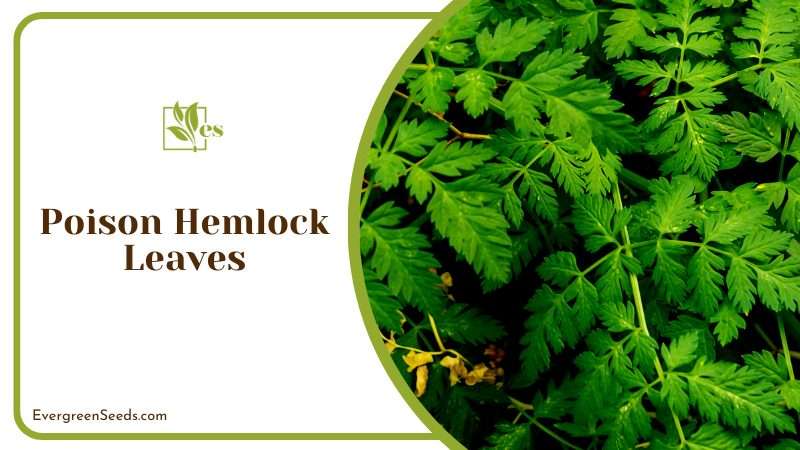
– Characteristics
A biannual plant with no hairs, poison hemlock blooms in the second year. The white taproot is tall and thick in the first year, and the lacy pinnately complex leaves create a basal rosette.
When in flower, the hollow branching stem can grow up to eight feet tall and is sometimes speckled or striped with red or purple toward the base. The umbel, or flat-topped cluster of the tiny white flowers, is where the seeds are produced in prodigious abundance.
The biennial poison-hemlock sprouts all through the year. Low-growing first-year plants have a chance to survive the winter in milder climes. The lack of hairs on the stems and the purple-reddish patches on the stems help to distinguish young poison-hemlock plants from carrot plants.
– Cautiousness
Second-year plants produce numerous umbrella-shaped clusters of small, white, five-petaled flowers in late spring, growing to a height of six to ten feet. Moreover, this is the plant that when it begins to be in bloom, would be mistaken for a wild carrot.
Wild carrot, in contrast to poison hemlock, has one tightly packed umbrella-shaped flower cluster on a short, hairy stem, typically with one purple blossom in the middle, and is typically no more than three feet tall.
Symptoms of poison hemlock’s acute toxicity for both humans and animals develop 20 minutes to three hours after intake. Even the dead canes are deadly and continue to be so for up to three years.
The toxin concentration fluctuates and is frequently higher in sunny places. The plant is harmful to the skin and respiratory system, but eating it poses the greatest risk. Wear gloves and take regular breaks when pulling or mowing large amounts of poison-hemlock plants to reduce exposure.
One who pulled plants on a hot day experienced a severe reaction as a result of the toxins being absorbed through their skin, which is why you should be cautious and mindful of the properties.


